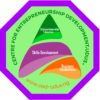
BASIC COMPUTER OPERATIONS
Course Description & Objectives
In today’s digital age, computer literacy is fundamental for personal and professional growth. The Basic Computer Operation course at the Usmanu Danfodiyo University, Sokoto Entrepreneurship Centre provides participants with essential computer skills and knowledge. Whether you are a student, an aspiring entrepreneur, or simply looking to enhance your computer proficiency, this course offers a solid foundation in computer operation and productivity software.
The curriculum covers computer hardware components, software applications, file management, internet usage, and digital communication. Participants will gain hands-on experience in navigating operating systems, creating and editing documents, using spreadsheets, and effectively utilizing the internet and email as well as introduces participants to the powerful world of presentation software using PowerPoint.
The course is designed to be accessible to individuals of all backgrounds, making it an ideal starting point for those with little to no prior computer experience. By the end of the course, you will be well-equipped to use computers confidently and efficiently for both personal and business purposes.
Course Objectives:
By the end of this course, participants will be able to:
- Understand computer hardware components and their functions.
- Navigate common operating systems, including Windows and macOS.
- Create, edit, and format documents using word processing software.
- Work with spreadsheets to organize and analyze data.
- Efficiently manage files and folders on a computer.
- Use the internet for research, communication, and online safety.
- Compose and send emails, as well as manage email accounts.
- Create effective presentations using Microsoft PowerPoint.
- Troubleshoot common computer issues and perform basic maintenance.

Course Outline
Module 1: Introduction to Computers
- The importance of computer literacy
- Understanding computer hardware and software
- Navigating different computer operating systems
Module 2: Word Processing
- Introduction to word processing software
- Creating, editing, and formatting documents
- Working with images and tables
- Printing and saving documents
Module 3: Spreadsheet Fundamentals
- Introduction to spreadsheets
- Creating and formatting spreadsheets
- Data entry and basic calculations
- Data analysis and charts
Module 4: File Management
- Organizing files and folders
- Copying, moving, and deleting files
- File backup and storage options
Module 5: Internet and Email Basics
- Navigating the internet
- Safe internet practices and online privacy
- Composing, sending, and managing emails
Module 6: Introduction to PowerPoint
- Understanding the significance of presentations
- Introduction to Microsoft PowerPoint
- Creating and formatting slides
- Adding text, images, and multimedia elements
Module 7: Effective PowerPoint Presentations
- Slide design and layout
- Using transitions and animations
- Delivering and sharing presentations
- Practical exercises in creating impactful presentations
Assessment:
- Quizzes and practical exercises
- Document creation and spreadsheet tasks
- File management assignments
- Internet research and email communication
ADDITIVE MANUFACTURING (3D Printing)
Course Overview
The “Exploring Additive Manufacturing: A Multidisciplinary Journey” course at the Usmanu Danfodiyo University, Sokoto Entrepreneurship Centre delves into the fascinating world of additive manufacturing, also known as 3D printing. Additive manufacturing is rapidly transforming various industries, from engineering and healthcare to art and architecture. This course offers a unique opportunity for participants to explore the revolutionary impact of 3D printing across multiple disciplines.
The curriculum guides participants through the historical evolution and technological advancements in additive manufacturing. You will gain insight into the interdisciplinary applications of 3D printing and its pivotal role in shaping the future. The course emphasizes hands-on experience, allowing you to engage in practical 3D printing projects tailored to your field of study.
By the end of this course, you will not only comprehend the fundamentals of additive manufacturing but also recognize its diverse potential in your area of interest. Whether you are an engineering enthusiast, a healthcare professional, an artist, or anyone with a curious mind, this course equips you with the knowledge to leverage 3D printing in your chosen field.
Course Objectives:
By the end of this course, participants will be able to:
- Understand the historical context and technological evolution of additive manufacturing.
- Recognize the multidisciplinary impact of 3D printing in various fields, including engineering, healthcare, art, and more.
- Explore the intricacies of different 3D printing technologies and their real-world applications in aerospace, biotechnology, architecture, and other industries.
- Gain knowledge of 3D printing materials, their properties, and their relevance in different applications.
- Discover advanced materials and their specialized uses in additive manufacturing.
- Acquire practical skills in 3D design using software such as Tinkercad and Fusion 360, and apply design principles to specific fields of study.
- Learn how to set up 3D printers for different purposes, utilize slicing software, and optimize print settings for quality and efficiency in various fields.
- Engage in hands-on 3D printing projects tailored to specific undergraduate majors, addressing challenges unique to each field.
- Explore post-processing and finishing techniques to enhance 3D-printed objects for different applications.
- Investigate the potential of additive manufacturing in solving real-world problems and discover career and business opportunities in various fields.
- Examine future trends and interdisciplinary opportunities in the evolving landscape of additive manufacturing.
This course invites participants to embark on a multidisciplinary journey through the innovative world of 3D printing, empowering them to apply this transformative technology to their chosen areas of study and future career pursuits.
Course Contents
Module 1: Introduction to Additive Manufacturing and Its Multidisciplinary Impact
- Understanding additive manufacturing’s role in various fields
- Historical overview and technological advancements
- Interdisciplinary applications in engineering, healthcare, art, and more
Module 2: 3D Printing Technologies and Their Cross-Disciplinary Use
- In-depth exploration of 3D printing technologies
- Real-world examples of 3D printing in aerospace, biotechnology, architecture, and more
Module 3: 3D Printing Materials and Their Versatility
- Overview of materials used in 3D printing
- Material properties and their relevance in different applications
- Advanced materials and their specialized uses
Module 4: Creative 3D Design for Different Fields
- Introduction to 3D modeling softwares (e.g., Tinkercad, Fusion 360)
- Design principles for specific fields of study (e.g., engineering, art, biology)
- Creating and adapting 3D models for unique applications
Module 5: Printing Process and Parameters for Diverse Needs
- Setting up 3D printers for various purposes
- Slicing software tailored to specific projects
- Optimizing print settings for quality and efficiency in different fields
Module 6: Hands-On Printing for Real-World Projects
- Practical demonstrations tailored to different undergraduate majors
- Printing objects related to engineering, biology, architecture, art, and more
- Addressing challenges specific to each field
Module 7: Post-Processing and Specialized Finishing Techniques
- Post-processing methods for enhancing parts in different applications
- Showcasing finished projects
Module 8: Future Pathways
- Applying additive manufacturing to solve real-world problems in different areas of study
- Exploring career and business opportunities in various fields
- Future trends and interdisciplinary opportunities

GRAPHIC DESIGN
Course Description & Objectives
Unleash your creativity and explore the world of visual communication with our Hands-On Graphic Design course at the Usmanu Danfodiyo University, Sokoto Entrepreneurship Centre. This course is a hands-on journey through the realm of graphic design, offering aspiring designers and entrepreneurs the skills to create captivating visual content. Whether you are a student, small business owner, or budding graphic designer, this course equips you with practical design skills and the ability to communicate visually with impact.
The curriculum covers design principles, typography, color theory, layout, and image manipulation using industry-standard graphic design software. Participants will engage in practical projects, designing logos, brochures, posters, and digital graphics. With a strong emphasis on hands-on learning, this course aims to foster a deep understanding of design concepts and the application of graphic design for personal and professional projects.
By the end of the course, you’ll have the design tools and techniques to craft compelling visuals that can enhance marketing, branding, and communication strategies.
Course Objectives:
By the end of this course, participants will be able to:
- Understand fundamental design principles and elements.
- Effectively use graphic design software, including Adobe Creative Cloud.
- Create eye-catching designs for various media, including print and digital.
- Manipulate images and work with typography to convey messages.
- Develop a portfolio of design projects for personal or business use.
- Apply graphic design for branding, marketing, and communication.

Course Outline
Module 1: Introduction to Graphic Design
- The role of graphic design in visual communication
- Overview of design principles and elements
- Exploring the history of graphic design
- Introduction to industry-standard design software
Module 2: Typography and Layout
- Understanding typography and fonts
- Designing with text and visual hierarchy
- Layout composition and balance
- Creating typographic designs
Module 3: Color Theory and Application
- Color psychology and meaning in design
- Color harmony and contrast
- Practical color selection and schemes
- Applying color in design projects
Module 4: Image Manipulation and Enhancement
- Introduction to image editing software
- Image cropping, retouching, and manipulation
- Creating composite images and digital collages
- Practical exercises in image enhancement
Module 5: Logo and Branding Design
- Importance of branding in design
- Principles of logo design
- Creating and refining logos
- Branding guidelines and practical applications
Module 6: Print and Digital Design
- Designing print materials: brochures, posters, and business cards
- Digital design for social media graphics and web banners
- Preparing designs for print and digital output
- Building a portfolio of design projects
Assessment:
- Design projects and hands-on exercises
- Portfolio development
- Final design project presentation
- Quizzes and design critiques
SOFTWARE DEVELOPMENT
Course Content & Objectives
The Hands-On Software Development course at the Usmanu Danfodiyo University, Sokoto Entrepreneurship Centre is designed to empower participants with practical skills in software development. In today’s digital age, software is the backbone of countless industries, making software development an essential skill. This course provides a comprehensive understanding of software design, coding, testing, and deployment.
Participants will delve into various programming languages, development environments, and tools. Through hands-on projects and real-world applications, you’ll gain the expertise needed to create software solutions for a range of domains, from web and mobile applications to database management and beyond.
Whether you’re a student, aspiring developer, or entrepreneur looking to enhance your digital capabilities, this course equips you with the knowledge and skills to excel in software development.
Course Objectives:
By the end of this course, participants will be able to:
- Understand the software development life cycle, from concept to deployment.
- Proficiently use programming languages and development environments.
- Develop web and mobile applications, including user interfaces and backend functionality.
- Create and manage databases for software applications.
- Implement software testing and debugging techniques.
- Collaborate on software development projects, including version control and team workflows.
- Deploy software applications to production environments.
- Explore best practices in software development and stay updated on industry trends.
- Build a portfolio of software projects that showcase practical skills and problem-solving abilities.
- Apply software development skills to personal, academic, or entrepreneurial projects.

Course Outline
Module 1: Introduction to Software Development
- Understanding the software development life cycle
- Overview of programming languages and development environments
- Setting up development tools and environments
Module 2: Web Development with HTML, CSS, and JavaScript
- Introduction to web development
- Creating web pages with HTML and styling with CSS
- Adding interactivity with JavaScript
- Building a basic web application
Module 3: Introduction to Programming Languages
- Exploring programming concepts
- Programming in languages like Python, Java, or C++
- Solving programming challenges and exercises
Module 4: Database Management
- Database fundamentals
- Creating and managing databases using SQL
- Integrating databases into software applications
- Practical exercises in database management
Module 5: Software Testing and Debugging
- Understanding the importance of testing
- Manual and automated testing techniques
- Debugging and troubleshooting software issues
- Testing software projects
Module 6: Collaboration and Version Control
- Collaboration in software development projects
- Using version control systems (e.g., Git)
- Team workflows and best practices
- Collaborative software development project
Module 7: Deployment and Best Practices
- Deploying software applications to production
- Best practices in software development
- Staying updated on industry trends
Assessment:
- Coding assignments and projects
- Development of web and mobile applications
- Database management exercises
- Software testing and debugging tasks
- Collaborative software project
- Deployment of a software application
WEBSITE DESIGN & DEVELOPMENT
Course Description & Objectives
The Hands-On Website Design and Development course at the Usmanu Danfodiyo University, Sokoto Entrepreneurship Centre offers a comprehensive exploration of web development, equipping participants with practical skills to create and manage websites. In an increasingly digital world, web design and development are essential for businesses, organizations, and individuals.
This course covers the full spectrum of website creation, from planning and designing user-friendly interfaces to coding and launching websites. Participants will learn to use web development languages such as HTML, CSS, and JavaScript. The course emphasizes hands-on projects, enabling participants to build responsive and interactive websites.
Whether you’re a student, aspiring web developer, or entrepreneur looking to establish an online presence, this course provides you with the knowledge and skills to excel in website design and development.
Course Objectives:
By the end of this course, participants will be able to:
- Understand the fundamentals of website design and development.
- Proficiently use web development languages and tools, including HTML, CSS, and JavaScript.
- Plan and design user-friendly website interfaces.
- Create responsive websites that adapt to various screen sizes and devices.
- Incorporate interactive elements into websites using JavaScript.
- Optimize websites for performance and search engine visibility.
- Manage web hosting, domain registration, and website deployment.
- Build a portfolio of websites that demonstrate practical skills and creativity.
- Apply website design and development skills to personal, academic, or entrepreneurial projects.

Course Outline
Module 1: Introduction to Website Design and Development
- Understanding the web development process
- Overview of web development languages and tools
- Setting up a development environment
Module 2: Planning and Designing User-Friendly Websites
- User experience (UX) and user interface (UI) design principles
- Wireframing and prototyping website layouts
- Designing website interfaces
- Creating a user-friendly design
Module 3: HTML and Structuring Web Content
- Introduction to HTML (Hypertext Markup Language)
- HTML elements and document structure
- Creating web content using HTML
- Building the structure of a website
Module 4: Styling with CSS
- Introduction to CSS (Cascading Style Sheets)
- Styling web content and layout
- Creating responsive designs with CSS
- Practical exercises in CSS
Module 5: Adding Interactivity with JavaScript
- Introduction to JavaScript
- Incorporating interactive elements into websites
- JavaScript events and functions
- Enhancing website functionality with JavaScript
Module 6: Optimization and Deployment
- Website optimization for performance
- SEO (Search Engine Optimization) best practices
- Managing web hosting and domain registration
- Deploying websites to a web server
Module 7: Building a Portfolio
- Selecting and refining website projects
- Creating a professional portfolio
- Presentation and critique of websites
Assessment:
- Website design and development projects
- User-friendly design exercises
- HTML and CSS coding assignments
- JavaScript interactivity tasks
- Website optimization and SEO project
- Website deployment and portfolio development
CLOUD COMPUTING
Course Description & Objectives
The Hands-On Cloud Computing course at the Usmanu Danfodiyo University, Sokoto Entrepreneurship Centre is a practical journey into the world of cloud technology. Cloud computing has become a fundamental aspect of modern technology, offering scalable solutions for businesses, organizations, and individuals. This course is designed to empower participants with the knowledge and skills to harness the capabilities of cloud computing for various applications.
Throughout the course, participants will explore different cloud service models, such as Infrastructure as a Service (IaaS), Platform as a Service (PaaS), and Software as a Service (SaaS). Practical hands-on activities will introduce participants to leading cloud platforms, enabling them to create and manage cloud resources. By the end of the course, you will be able to utilize cloud technology to streamline processes, reduce costs, and enhance efficiency in diverse fields.
Whether you’re a student, aspiring cloud engineer, or entrepreneur seeking to leverage cloud computing for your projects, this course equips you with practical skills for success in the digital age.
Course Objectives:
By the end of this course, participants will be able to:
- Understand the fundamentals of cloud computing and its impact on the digital landscape.
- Identify and differentiate between various cloud service models (IaaS, PaaS, and SaaS).
- Proficiently use leading cloud platforms to create, configure, and manage cloud resources.
- Develop and deploy applications in the cloud.
- Optimize cloud solutions for scalability, performance, and cost efficiency.
- Implement security measures in cloud computing.
- Collaborate on cloud-based projects and engage in team workflows.
- Build a portfolio of cloud-based projects that demonstrate practical skills and cloud solutions.
- Apply cloud computing skills to personal, academic, or entrepreneurial projects.

Course Outline
Module 1: Introduction to Cloud Computing
- Understanding the concept and principles of cloud computing
- Historical overview and technological advancements
- Differentiating between cloud service models (IaaS, PaaS, SaaS)
- Setting up a cloud development environment
Module 2: Creating and Managing Cloud Resources
- Exploring leading cloud platforms (e.g., AWS, Azure, GCP)
- Creating and configuring cloud virtual machines (VMs)
- Managing cloud storage and databases
- Practical exercises in cloud resource management
Module 3: Developing and Deploying Applications in the Cloud
- Cloud-based application development
- Deploying applications in the cloud
- Auto-scaling and load balancing
- Practical cloud application development tasks
Module 4: Optimizing Cloud Solutions
- Scalability in the cloud
- Cost efficiency and performance optimization
- Monitoring and troubleshooting cloud resources
- Optimizing cloud solutions for real-world applications
Module 5: Security in Cloud Computing
- Cloud security fundamentals
- Identity and access management (IAM)
- Data encryption and compliance
- Implementing security measures in the cloud
Module 6: Collaboration and Team Workflows
- Collaborating on cloud-based projects
- Using version control systems (e.g., Git) in the cloud
- Team workflows and best practices
- Collaborative cloud-based project
Module 7: Portfolio Development
- Selecting and refining cloud-based projects
- Creating a professional portfolio of cloud solutions
- Presentation and critique of cloud-based projects
Assessment:
- Cloud resource creation and management projects
- Cloud application development and deployment exercises
- Cloud optimization and cost-efficiency project
- Cloud security implementation task
- Collaborative cloud-based project
- Portfolio of cloud-based projects

